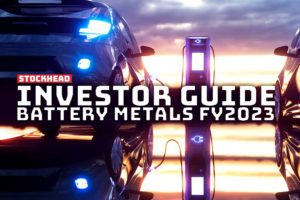- Nano silicon materials stripped from recycled solar panels may have potential use
- Scientists say nano silicon could be used to improve battery anodes used in EVs
- We look at the ASX stocks in the battery space
Australia leads the world when it comes to residential rooftop solar, installing new solar panels at 10 times the global average rate.
But what this also means is that Australia has a greater solar waste problem per capita than any other country.
The former Environment Minister Sussan Ley summed up the problem succinctly in 2021:
“The uptake of millions of solar panels across the country from rooftops to solar farms has been vital from an emissions perspective.
“But the explosion of retailers and importers in the area, and the lack of an industry wide approach to collection and recycling, means it also looms as a landfill nightmare.”
To date there has been no Australian legal research on the subject, and very limited research conducted internationally.
But now, new research led by Associate Professor Penelope Crossley from the Sydney Law School aims to addresses this research gap and reorientate renewable energy laws in the country.
“This market failure demands regulatory intervention to fundamentally reorient our regulatory framework governing renewable energy technologies,” said Crossley.
“Australia’s lack of a credible solution coupled with the significant scale, costs and benefits involved, means it provides a perfect test case for my new theoretical approach: circular clean energy regulation.”
This reorientation is urgently needed, she said, because up to 90% of our photovoltaic solar panels go straight to landfill as toxic hazardous waste at their end of life.
This in turn leads to a hugely urgent problem because solar waste poses not only a serious risk to the environment, but also to human health. It contains cadmium and lead which are known to cause cancer, neurological and cardiovascular problems.
Why recycling solar panels is costly
At the moment, Victoria, South Australia and the ACT have banned solar panels ending up in landfill – they have to be taken to e-waste drop off points to be recycled.
But this creates another problem of its own – it incentivises companies in those states and territory to stockpile their solar waste in order to avoid paying for recycling.
Crossley said any new regulations should be mindful of the cost of recycling to companies, including the vast distances within Australia and access to recycling centres.
“The current cost of recycling each solar panel in Australia is $28, roughly six times the cost of sending it to landfill ($4.50),” said Crossley.
This high price reflects the technical difficulties and high manual labour costs of stripping a typical solar panel with sufficient precision so that its elements can be reused.
According to John Polhill from Sustainability Victoria, recycling solar panels is indeed not straightforward.
“They are laminated, they’re stuck together, they’re glued,” Polhill told ABC News.
And to be reused, Polhill said solar panels need to be broken down so each component — including the glass, aluminium, copper, plastic and silicon — can be separated.
The cost problem is not unique to Australia, with other major ‘solar powers’, including China, Japan, Korea and the US, also struggling to achieve a commercially viable solution in recycling solar panels.
Nano silicon is the answer
But there’s some good news. Researchers have now developed a sustainable and highly lucrative way to address this problem and incentivise people to recycle their solar panels.
There is one part of the solar panel, called nano silicon, that could fetch as much as $64,000 per kilogram when stripped off.
Silicon is the part of the panel that captures sunlight. It is a ubiquitous substance used in everything from mobile phones to computer chips, but when refined into its purest form – nano silicon – it becomes a valuable material.
Scientists from Deakin University’s Institute for Frontier Materials (IFM) have successfully tested a new process that can safely and effectively extract silicon from old solar panels, then convert it into the nano material.
These nano-silicon materials would then be mixed with graphite to develop a new type of battery anode shown to increase lithium-ion battery capacity by a factor of 10 – a critical breakthrough in energy storage technology.
“We are using that nano-silicon to develop low-cost battery materials that will help deliver the higher performing, longer lasting, affordable battery technology critically needed to drive Australia’s clean energy transition,” said IFM’s lead researcher, Dr Md Mokhlesur Rahman.
Rahman’s team also estimated that Deakin’s breakthrough could generate US$15 billion in material recovery if extrapolated to the 78 million tonnes of solar panel waste expected to be generated globally by 2050.
“Silicon recovered from end-of-life solar panels can be a massive, sustainable source of nano-silicon to meet future demand for raw battery materials. It will help to power the homes, transport and communities of the future,” said Deakin Professor, Ying (Ian) Chen.
Nano silicon battery anode already being developed
Two companies that have begun to explore the potential of nano silicon in EV batteries are Japan giant Panasonic and Sila, a battery materials company based in California.
Earlier this week, the two companies announced the signing of a commercial agreement for Sila’s high-performance nano-composite silicon anode, Titan Silicon.
This high energy density battery is expected to enable automakers to deliver “unmatched EV performance”, dramatically increasing vehicle range, and reduce charge times.
Sila was the first to bring next-generation anode materials to market with the launch of Titan Silicon in the WHOOP 4.0 in 2021.
In 2022, the company was also the first next-generation battery materials company to sign a supply agreement with a global auto manufacturer, Mercedes Benz.
Battery related stocks on the ASX
Anteoch is developing additives and advanced binder technology to boost the performance of silicon containing anodes.
Its AnteoX technology has been recognised as an emerging leader within the battery manufacturing and battery storage space after winning the Renewable Energy Award and the Australian Technologies Competition in December 2022.
According to ADO, AnteoX is a powerful additive that reinforces battery binders and helps maximise the performance of silicon containing anodes through increasing capacity, extending cycle life, thus enabling lighter and more compact high energy lithium-ion batteries to be manufactured.
The company entered into a non-binding MoU with NYSE-listed and leading binder company Trinseo Europe GmbH at the end of February to develop a program which incorporates the combination of AnteoX with Trinseo’s Voltabond binder for a clear path to market.
As more silicon is added to the anodes, more advanced binder solutions are needed to improve the effectiveness and efficiency of the anode with AnteoX being one such solution.
LIT has evolved from an explorer into lithium tech company. LIT is establishing what it called a “circular battery economy” to ensure resource security by way of its three vertically integrated business divisions – recycling, batteries and chemicals.
The company’s 100% company-owned subsidiary Envirostream is focused on the efficient recovery of critical minerals from end-of-life batteries (especially lithium-ion batteries).
The use of those chemicals can then be used in the production of new lithium-ion batteries by LIT’s subsidiary VSPC.
The third vertical is energy-efficient recovery of lithium from spodumene that is discarded by traditional lithium-chemical conversion, as well as mine waste, via its patented processing technologies LieNA and SiLeach to create primary battery chemicals.
LIS is at the forefront of battery cells innovation. Lithium sulfur (Li-S) batteries are considered attractive candidates for next-generation energy storage because sulfur is abundant, low-cost and sustainable, unlike heavy metals used in lithium-ion batteries.
They are also considered as offering potentially the highest energy storage. But there’s a catch with the problem so far – Li-S batteries tend to fail after a low number of recharge cycles, making them uncommercial.
It’s a problem Brisbane-based LIS is confident of solving with the company working to commercialise a decade of scientific research in the development of Li-S batteries.
Li-S has inked a deal with leading US e-aviation company magniX, which will test the potential of the company’s lithium sulfur and lithium metal cell technology for e-aviation applications.
ATC’s CERENERGY technology uses cheap common table salt and ceramic solid-state technology to reduce costs by up to 50% compared to regular lithium-ion batteries.
The CERENERGY sodium-alumina solid state battery project is specially designed to meet the needs of the grid energy storage market, which is projected to grow in value from US$4.4bn last year to US$15.1bn by 2027.
Advantages include being fire and explosion-proof, the ability to operate in a wide range of temperatures, as well as having life spans of more than 15 years.
ATC has a joint venture with applied research organisation Fraunhofer-Gesellschaft which is working to commercialise the 100 megawatt hour production facility at the Schwarze Pumpe Industrial Park in Saxony, Germany, on land owned by Altech.
Fraunhofer has already tested the world’s largest CERENERGY batteries in terms of capacity in stationary battery modules.
Read more: Has the time come for silicon anode batteries?
At Stockhead, we tell it like it is. While Altech Batteries is a Stockhead advertiser, it did not sponsor this article.
Explore More
Read MoreBattery Metals











